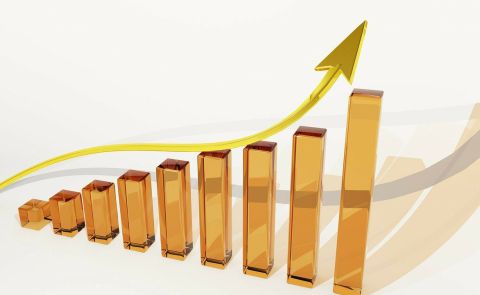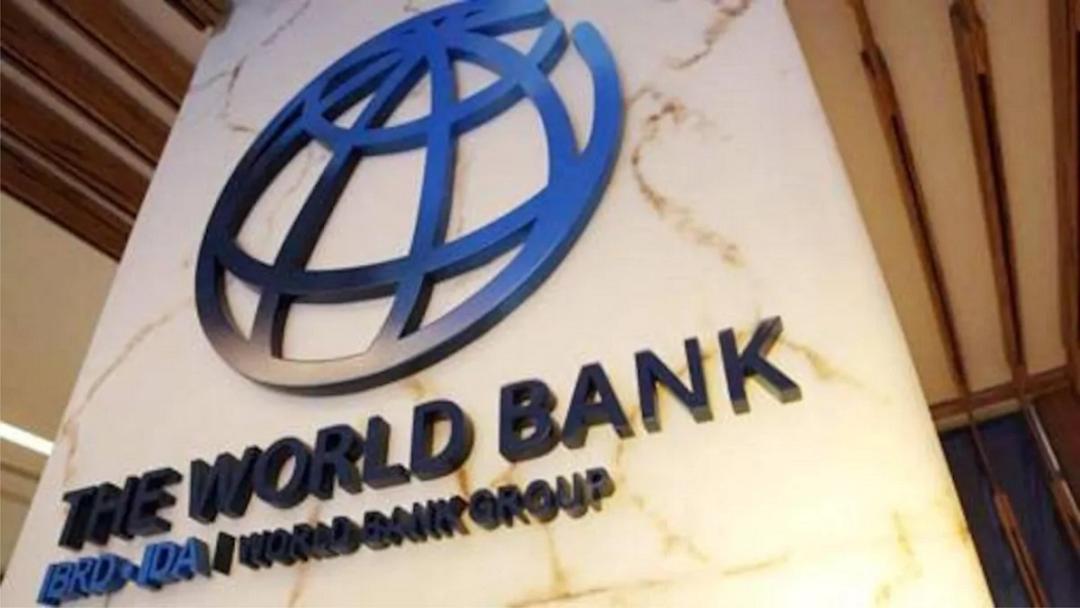
World Bank economic forecasts for South Caucasus countries

On 7 October, the World Bank group published their updated economic forecasts for the countries of Europe and Central Asia. The report highlighted that regional output collapsed in the first half of 2020, as growing domestic outbreaks and pandemic-related restrictions caused domestic demand to plummet, exacerbated supply disruptions, and halted manufacturing and services activity. The sharp decline in remittance inflows — which account for about 10 percent of GDP in the region, excluding the Russian Federation and Turkey — contributed to the slide in retail sales. The economies hardest hit in the region were those with strong trade or value chain linkages to the Euro zone or Russia and those heavily dependent on tourism or energy and metals exports.
When it comes to the potential growth in the region, it was projected to recover in 2021, but the pace of recovery is highly uncertain and depends on the duration of the pandemic, the availability and distribution of a vaccine, and the degree of improvement in trade and investment. It emphasised that once the health and economic crises caused by the Covid-19 pandemic are brought under control, policy efforts in the region will need to address the steep fall in productivity growth over the past decade and focus on structural reforms that are essential to reignite long-term growth prospects. Strengthening governance and improving institutional quality could yield growth dividends and attract investment.
Armenia
The report highlighted that the economic impact of the pandemic has been severe on Armenia. Following a strong start in the first two months of 2020 when the economy grew by 9.2 percent year-over-year (yoy), growth turned negative in March as businesses were forced to close and remittances and tourist arrivals dried up. A gradual recovery started in May; however, the spike in infections dented the revival. By mid-year, the economy contracted by 5.7 percent yoy, driven by a sharp contraction of private consumption (8.9 percent yoy) and investment (30.7 percent yoy), only partially offset by higher government spending and import compression. On the supply side, construction and services were most affected, with financial and ICT sectors remaining more resilient due to their greater reliance on digital technologies. Agricultural output grew by 1.8 percent yoy in the first half of 2020 and a low base in 2019 pushed growth in mining to 21.7 percent yoy.
Inflation remained subdued, averaging 0.8 percent in the year to August, reflecting deflation in food and world oil prices and lower aggregate demand. In response, the Board of the Central Bank of Armenia (CBA) cut the policy rate four times in 2020, by a cumulative 125 basis point to 4.25 percent, its lowest level since 2006. The government launched several economic and social measures to mitigate the impacts of the pandemic at an estimated cost of around 2.3 percent of GDP and pushed current spending in the first seven months of 2020 up by 19 percent yoy. Capital spending increased by 62 percent, but from a low base in 2019 and it remained below budgeted levels reflecting persistent challenges in public investment management. Revenues fell by 6 percent yoy resulting in a deficit of around 1.7 percent of projected annual GDP in the year-to-July. Stepped up domestic and external borrowing financed the deficit and pushed public debt to approximately 60 percent of GDP, with the government invoking an escape clause in the fiscal rule allowing to increase debt during crises.
The goods trade deficit improved by 21 percent yoy in the year to July, as imports contracted by 13.7 percent yoy offsetting the 6.4 percent yoy decline in exports. The smaller trade deficit offset the decline in the services and income accounts, as tourism arrivals were suspended and money transfers from abroad declined (15 percent yoy). Despite slowing FDI inflows, support from IFIs financed the deficit and kept reserves at about five months of imports as of July 2020.
In the baseline scenario, the Armenian economy was projected to contract by 6.3 percent in 2020, before rebounding by 4.6 percent in 2021. Output is projected to recover to pre-Covid levels only in 2022. This is under the assumption that Armenia will continue to experience community transmission until mid-2021, with Covid-19 infections remaining largely stable and no further lockdowns to expect. The economic contraction in 2020 is expected to cause a sharp increase in unemployment. The upper-middle income poverty rate could increase by 4.8 percentage points. The rise in the budget deficit to 5.4 percent of GDP, coupled with the decline in GDP is expected to push public debt up by 10 pp to 63 percent of GDP in 2020.
Azerbaijan
As for Azerbaijan, the report outlined that the two lockdowns imposed by the country’s governement, together with a fall in oil production, induced a 2.7 percent contraction in GDP in the first half of 2020. On the supply side, services were impacted the most, particularly retail, hospitality and construction. A drought slashed agricultural output growth. Oil production fell, as the country adhered to the reduced OPEC+ production quota. On the demand side, as incomes fell and sentiments deteriorated, both consumption and investment plummeted. Hydrocarbon exports plunged by 25 percent in the first half of 2020, reducing the trade surplus by 10 percent year-on-year. A sharp fall in oil prices in March also spurred pressures on the exchange rate.
Increased foreign exchange sales by the State Oil Fund (SOFAZ) helped maintain the manat at 1.7 AZN/USD. The exchange rate pressures have subsided since, with cumulative reserves of the central bank and SOFAZ stabilizing at more than 90 percent of GDP, despite a decline in SOFAZ assets. Weak domestic demand and a stable exchange rate kept annual CPI inflation low at 3.1 percent in the first half of 2020. This enabled the Central Bank of Azerbaijan (CBA) to reduce the policy rate twice in 2020, to 6.75 percent in July. The consolidated fiscal deficit increased to 1.5 percent of GDP in the first half of 2020, from a surplus of 9 percent of GDP in the same period of 2019, reflecting a steep contraction of oil revenues and higher spending to accommodate increased healthcare spending and to finance an anti-crisis fiscal stimulus (over 3 percent of GDP).
Azerbaijan’s economy was projected to contract by 4.2 percent in 2020, reflecting a broad-based decline in both energy and non-energy activity. The pace of recovery is forecast to be gradual, with the economy expected to recover to the pre-Covid-19 output levels the earliest by end-2022. Adherence to a reduced OPEC+ quota is forecast to lead to a 5 percent drop in energy sector output in 2020. The non-energy sector is expected to shrink by 3.6 percent, reflecting a depressed service sector and slower agriculture growth due to the drought. On the expenditure side, aggregate demand is expected to remain weakened, while real household incomes decline, and corporate sector financial constraints would stay acute. Growth is estimated to recover to 1.9 percent in 2021, as the remaining supply disruptions were projected to be phased out, restoring the pre-pandemic oil production and growth in service sectors. Growth would further accelerate to 2.8 percent in 2022, as economic activity gradually returns to normalcy.
Georgia
The report highlighted that the initial Covid-19 economic shock was severe to Georgia, with the economy contracting 16.6 percent year-on-year (yoy) in April. With the infections being brought under control, restrictions were gradually loosened, and the economy started to recover, with real GDP contraction improving to 5.5 percent yoy by July 2020. Acceleration of government social spending, robust credit growth and resilient remittance inflows also added to the recovery. Nevertheless, most sectors remained in contractionary territory, except mining, and sewage and water supply. The impact on jobs has been severe. More than one-third of those employed were unable to work at the height of the restrictions. By early June, half of the people who stopped going to work had returned to their jobs. Still, more than 8 percent of jobs were lost in the second quarter while wages fell 11 percent yoy in real terms.
Inflation increased to 7 percent by the end of 2019, well above the central bank’s target of 3 percent, on account of higher excises on tobacco in 2019 and a weaker lari. In response to the higher policy rate, inflation retreated in early 2020; however, the exchange rate overshot in March 2020 as the pandemic spread, and together with supply chain disruptions pushed inflation back to 6.9 percent in April. The recovery of the lari as well as year-on-year decline in global oil prices helped to bring inflation down to 4.8 percent in August. Given the severity of the demand shock created by COVID-19 and the downward pressure on inflation, the National Bank of Georgia (NBG) has gradually lowered its policy rate by 100 basis points since April 2020 to 8 percent.
The current account deficit deteriorated to 11 percent of GDP in the first quarter of 2020, almost doubling over the previous year, in response to a sharp drop in tourism proceeds and remittances. The current account is likely to have improved in the second quarter with more resilient than expected remittances and a sharper contraction in imports compared to exports. On the financing side, net FDI and portfolio inflows underperformed compared to 2019. However, substantial public borrowing fully financed the deficit and allowed for strong reserve accumulation, despite more frequent interventions by NBG to stabilize the lari. The fiscal deficit expanded with rising social spending and a decline in revenue collections. Tax revenues declined by 3.2 percent yoy in January-July. The government’s fiscal stimulus package, estimated at 5.5 percent of GDP, pushed government consumption up by 18.4 percent yoy.
The Georgian economy was projected to contract by 6 percent in 2020, with severe welfare impacts; poverty could go up by 2.8 percentage points (pp) (using the USD 3.20 PPP 2011 international poverty line) or by 4.6 pp using the national poverty line in 2020. This translates to as many as 160,000 Georgians becoming impoverished. In addition, over 400,000 could suffer downward mobility. The fiscal stimulus, containing acceleration of capital spending, tax deferrals, accelerated VAT refunds and sector support for most affected businesses, as well as higher social spending, will continue to support the recovery in the rest of 2020. This is expected to push the fiscal deficit to around 8.5 percent of GDP in 2020 and public debt to 60 percent of GDP.
See Also


Yerevan Balances Strategic Ties with Both US and Russia, Says Foreign Minister

FM Mirzoyan: Peace Deal with Azerbaijan Is Within Reach

Pashinyan and Erdogan Hold Call, Reaffirm Commitment to Ongoing Dialogue

Ilham Aliyev and Masoud Pezeshkian Discuss Development of Bilateral Relations

